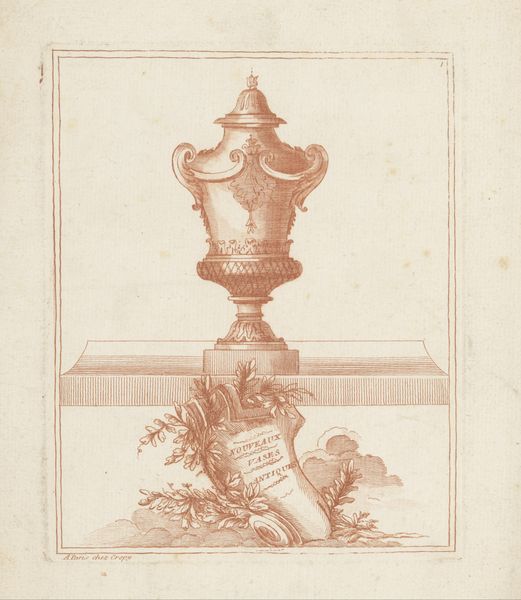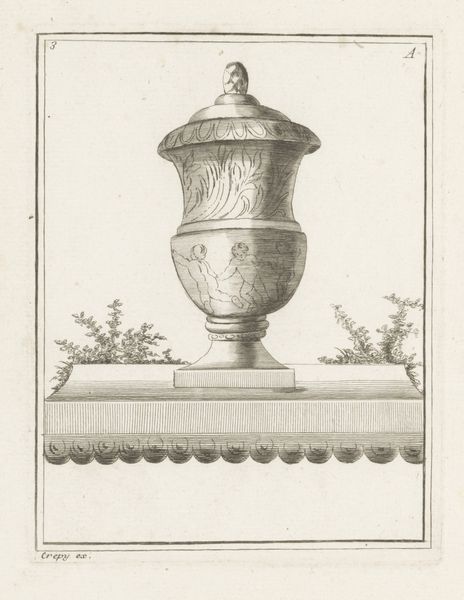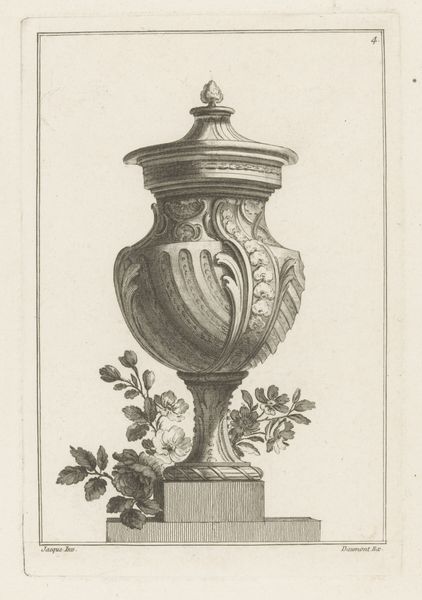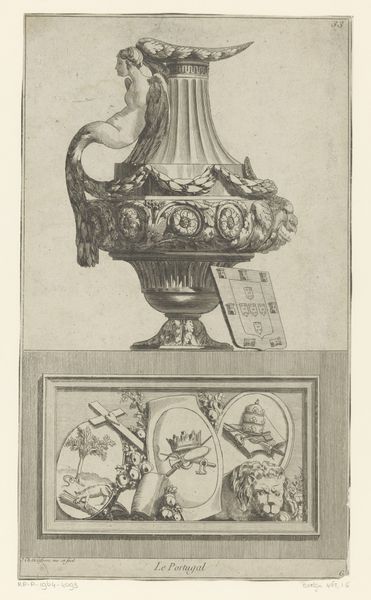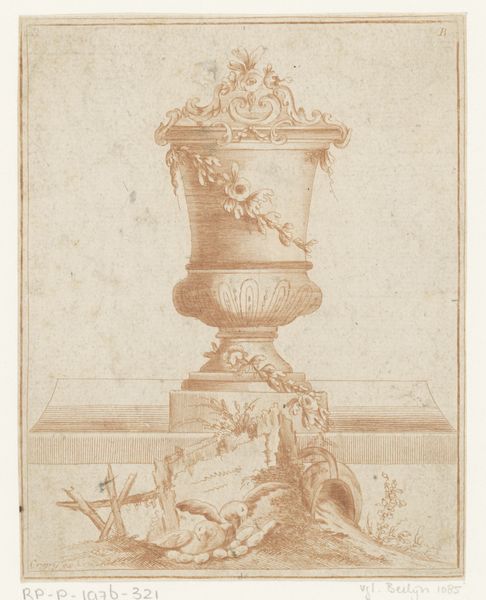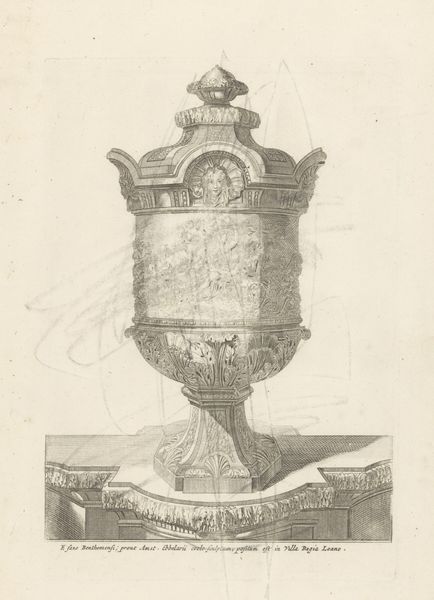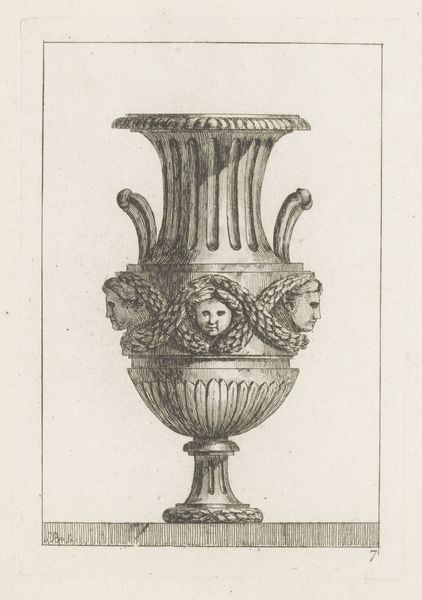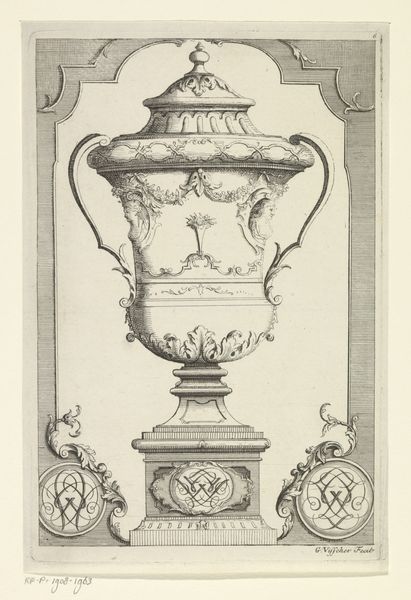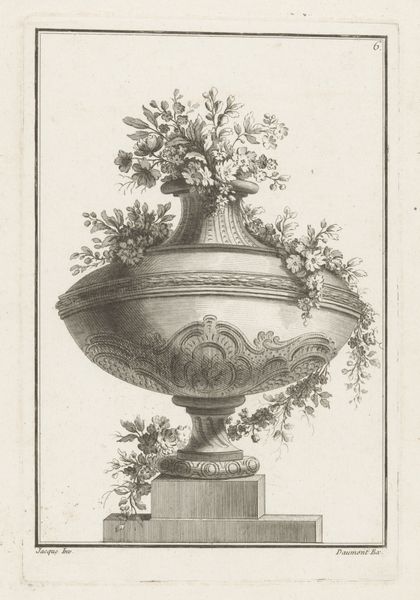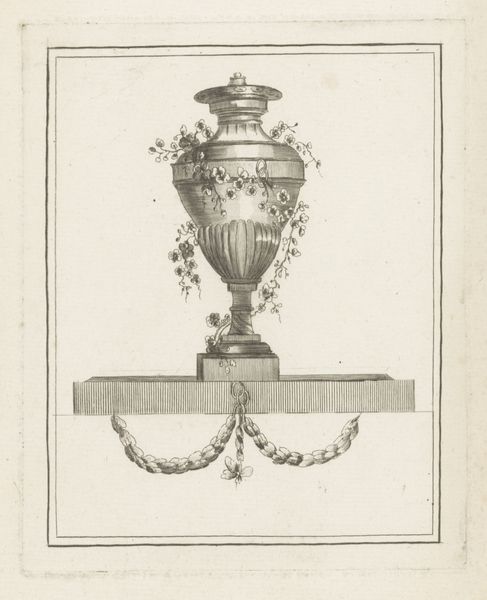
Dimensions: height 168 mm, width 136 mm
Copyright: Rijks Museum: Open Domain
Editor: This engraving, "Vaas met guirlandes," from 1770-1780 depicts a vase cascading into ruins. It strikes me as a sort of still life depicting the passage of time. What stands out to you? Curator: The fascinating element for me lies in its production and context. An engraving like this, produced in multiples, wasn’t high art in the traditional sense. It was a commodity, meant to be consumed. We must ask: who was making this, for whom, and under what economic conditions? Editor: So, you are looking beyond just the image itself to consider its social footprint? Curator: Exactly. Look at the vase, a symbol of wealth and status. The act of engraving, replicating this symbol, democratizes it to a degree, spreading its influence to a wider market. The print is itself an object manufactured within specific means of production of that era, from the engraver’s tools and skills, to the networks of distribution. How did this particular method and skill impact its message, versus, say, a painting of a vase? Editor: Interesting! The contrast between the classical form and the means of production highlights the changing dynamics of art and its consumption. It seems less about pure aesthetics and more about the societal role of the image. Curator: Precisely. The very material and technique used to create it is just as important, if not more, than its ostensible subject. Editor: I had never considered it that way before, thank you for shining a light on its materiality!
Comments
No comments
Be the first to comment and join the conversation on the ultimate creative platform.
